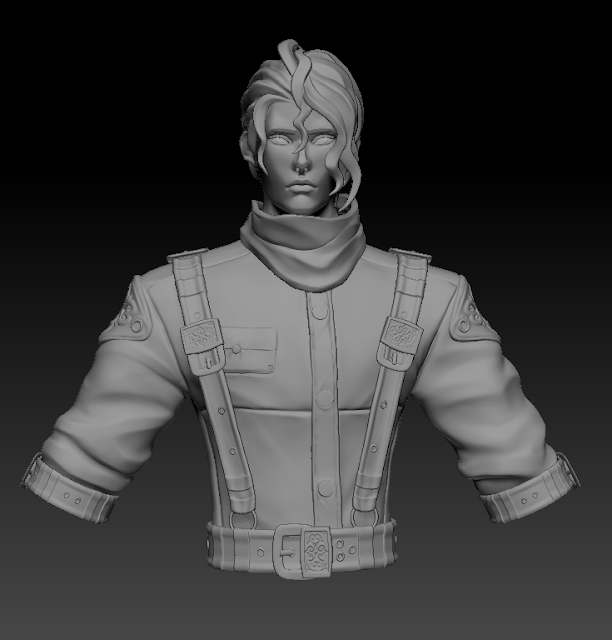I went into Unreal with an idea of what kind of lighting I wanted so I was able to quickly set it up with some post processing overlayed on top. In addition to my lighting, I wanted to add something extra to my model to make it stand out a bit more so I created an outline shader. This was made with a post processing material, adding lines to the main silhouette of the character and some smaller subtle lines on some edges through depiction by the normal map.
After completing all those technical parts, it was safe to call this model finished. I’m fairly happy with what the final project looks like, I feel like I captured the style I was aiming for quite well and it looks polished. Learning certain techniques like using ZModeller in ZBrush and utilising masks in Substance Painter were definitely beneficial to my workflow and are things that I’ll be using an indefinite amount of times in future. Some areas could stand to be improved like getting a cleaner bake in some areas and managing my time when it comes to tackling projects like this. I know now where I need to dedicate larger amounts of time to within my workflow and when I need to pull away from certain parts to move on to the next. I’m sure with further practice my methods will become more refined so it’s just a case of continuing making models whilst keeping in mind what past actions could be improved.
Overall though this was a smooth
project with no huge hinderances. The model came out to my liking so I’m
satisfied with that!














